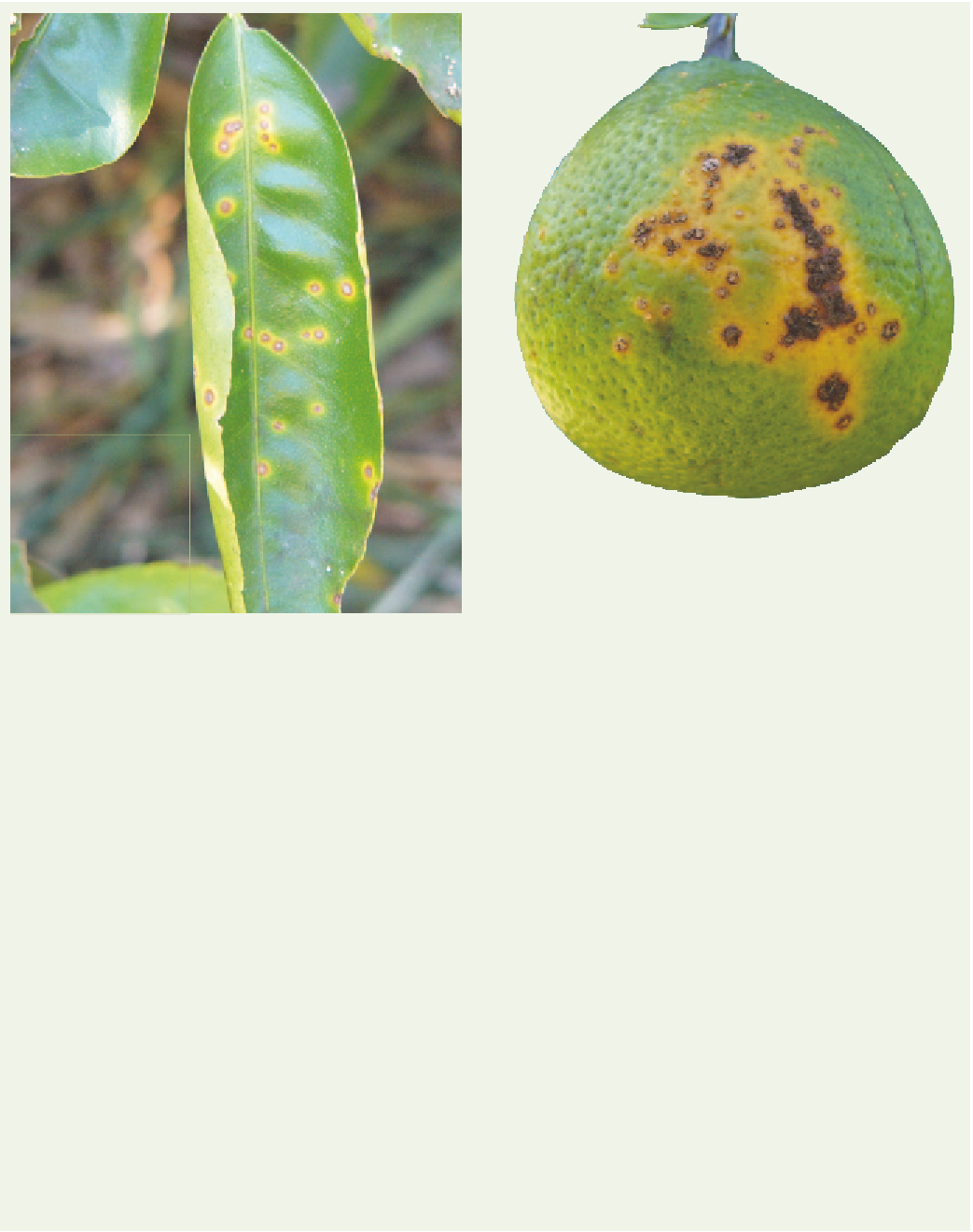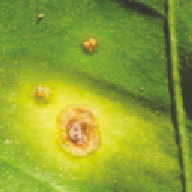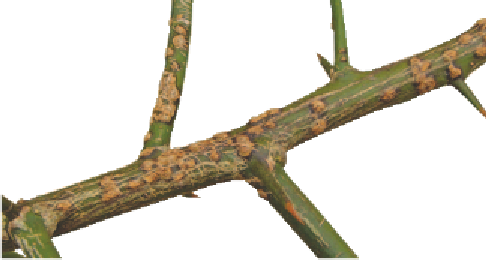Agriculture Reference
In-Depth Information
Fig 6.2 Citrus canker lesions on fruit. Note the yellow halos on
green fruit that typically become indistinct as the fruit changes
colour.
Fig 6.1 Leaf symptoms of citrus canker. Note the raised corky
centre, water-soaked margins and the blister-like appearance of
young lesions. Inset: young lesions.
Lesions on stems and fruit are similar to those on leaves
except the yellow halo and water-soaked margins are
often less noticeable or absent.
Source of infection and spread
Citrus canker establishment and spread is favoured by
warm (20-35°C), wet conditions. The bacterium
survives in lesions on leaves, stems and fruit of diseased
trees. During wet weather, bacteria ooze out of old
lesions and are spread by wind-blown rain to form new
infections. Infection occurs from bacterial cells entering
natural openings such as stomata (small pores for gas
exchange) or via wounds created by insect feeding or
physical damage. Symptoms of infections through
stomata first appear on the underside of leaves, but
symptoms from wounds can first appear on either side
of leaves. Entry of the bacterium through stomata occurs
most effectively after stomata are developed, but before
the cuticle and waxes are formed on tissue surfaces -
that is, when leaves are 50-80% expanded. Infections
after this time are only possible via wounds.
Fig 6.3 Citrus canker lesions on stems. Wind-rub areas are possible
entry points for canker. Stem symptoms lack a yellow halo.
Local spread (e.g. within row, block or farm) is by
wind-driven rain, which can damage the host, carry the
bacteria from tree to tree, and help the bacteria penetrate
natural openings and wounds. The disease can also be
spread locally or over longer distances by the movement
of objects or people that come into contact with the
bacteria; for example, pickers or farm equipment and
machinery. Severe storms and hurricanes can also spread
the disease over longer distances, such as within a region
or State. The movement of infected propagating material,
such as budwood, rootstock seedlings and grafted plants,
is the most effective way to spread the disease over any
distance.














